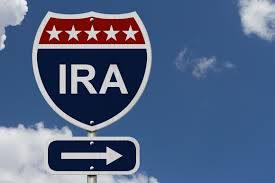401k, SIMPLE IRA, SEP and SARSEP IRA defined
A 401(k) is a feature of a qualified profit-sharing plan that allows employees to contribute a portion of their wages to individual accounts.
• Elective salary deferrals are excluded from the employee’s taxable income (except for designated Roth deferrals).
• Employers can contribute to employees’ accounts.
• Distributions, including earnings, are includible in taxable income at retirement (except for qualified distributions of designated Roth accounts).
A SIMPLE IRA plan (Savings Incentive Match Plan for Employees) allows employees and employers to contribute to traditional IRAs set up for employees. It is ideally suited as a start-up retirement savings plan for small employers not currently sponsoring a retirement plan.
Simplified Employee Pension Plan (SEP)
A SEP plan allows employers to contribute to traditional IRAs (SEP-IRAs) set up for employees. A business of any size, even self-employed, can establish a SEP.
Salary Reduction Simplified Employee Pension Plan (SARSEP)
A SARSEP is a Simplified Employee Pension (SEP) plan that:
• Was established before 1997.
• Permits employee salary reduction contributions.
• Meets the following participation requirements annually based on all eligible employees (even those hired after 1996):
o At least 50% of eligible employees must choose to make employee salary reduction contributions for the year.
o Had no more than 25 employees who were eligible to participate at any time during the preceding year.
• May need to be amended for current law change
Retirement Plans and their contribution limits

For 2015, 2016, and 2017, your total contributions to all of your traditional and Roth IRAs cannot be more than:
- $5,500 ($6,500 if you’re age 50 or older), or
- your taxable compensation for the year, if your compensation was less than this dollar limit.
Deferral limits for 401(k) plans
The limit on employee elective deferrals (for traditional and safe harbor plans) is:
- $18,000 in 2015 - 2017
Deferral limits for a SIMPLE 401(k) plan
The limit on employee elective deferrals to a SIMPLE 401(k) plan is:
- $12,500 in 2015- 2017
Catch-up contributions for those age 50 and over
If permitted by the 401(k) plan, participants who are age 50 or over at the end of the calendar year can also make catch-up contributions. The additional elective deferrals you may contribute is:
- $6,000 in 2015 - 2017 to traditional and safe harbor 401(k) plans
- $3,000 in 2015 - 2017 to SIMPLE 401(k) plans
Individual Retirement accounts

A traditional individual retirement account (IRA) allows individuals to direct pretax income towards investments that can grow tax-deferred; no capital gains or dividend income is taxed until it is withdrawn
A Roth IRA is an IRA that, except as explained below, is subject to the rules that apply to a traditional IRA.
• You cannot deduct contributions to a Roth IRA.
• If you satisfy the requirements, qualified distributions are tax-free.
• You can make contributions to your Roth IRA after you reach age 70 ½.
• You can leave amounts in your Roth IRA as long as you live.
• The account or annuity must be designated as a Roth IRA when it is set up.
The same combined contribution limit applies to all of your Roth and traditional IRAs
